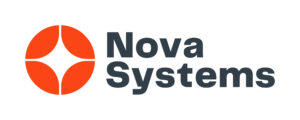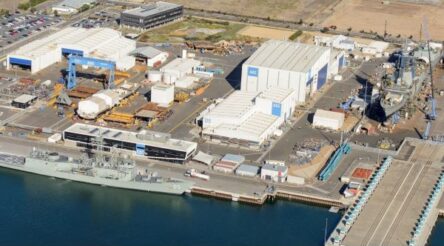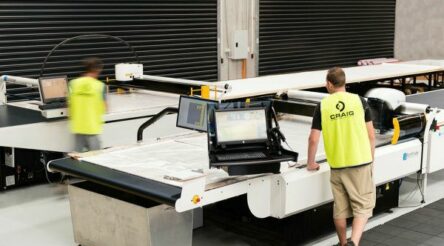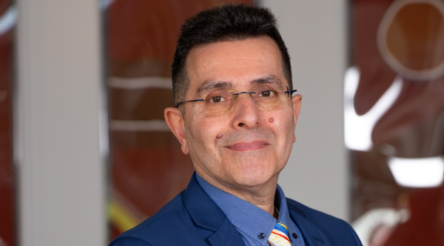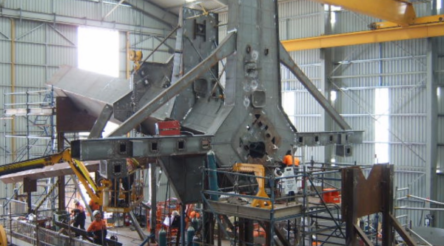Celebrating Australian sovereign capability – the Covid woes and revival of Electro Optic Systems
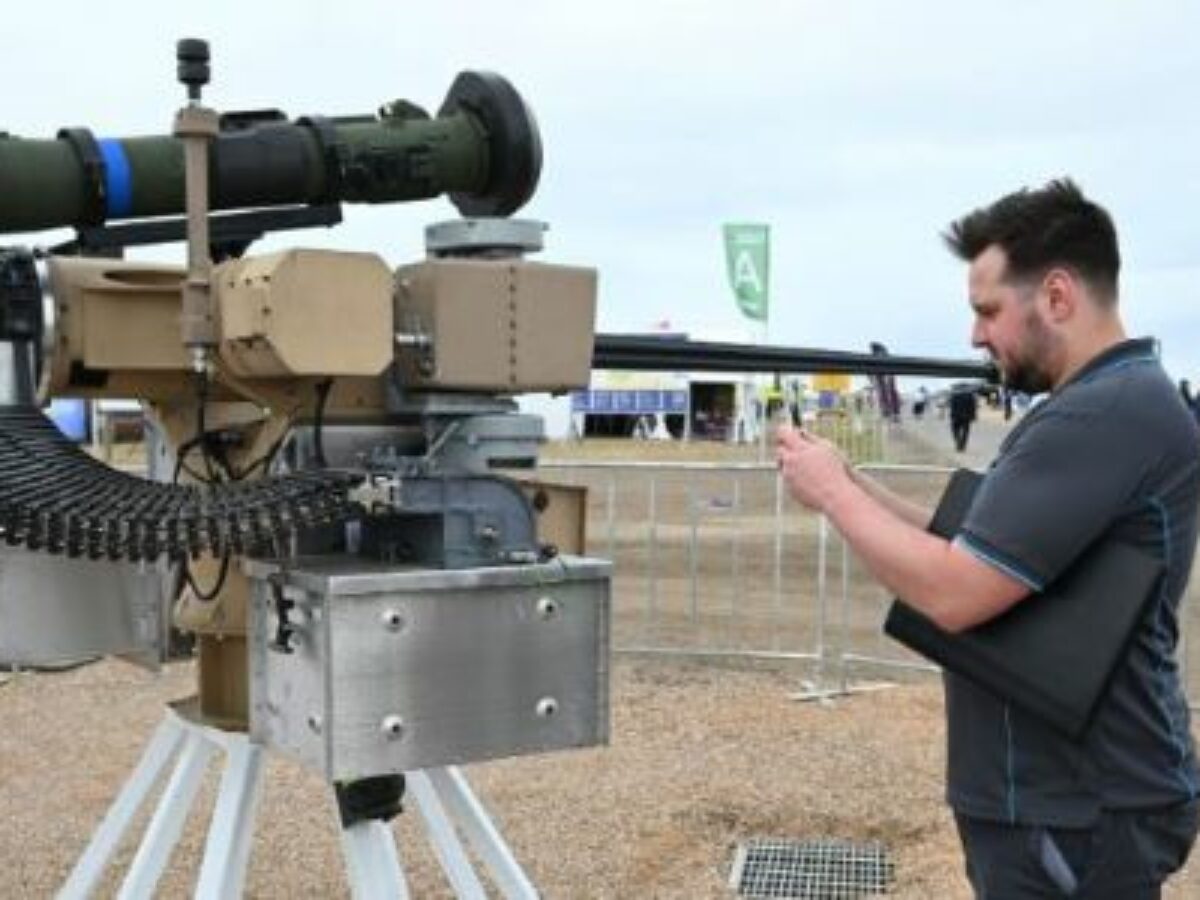
Today in our Celebrating Australian sovereign capability editorial series we look defence, communications and space manufacturer Electro Optic Systems, one of a handful along with shipbuilder Austal of genuine Australian defence prime contractors. Here Peter Roberts interviews Matthew Jones, Executive Vice President of EOS Defence Systems.
Australia has a lot riding on the success of Electro Optic Systems as one of a tiny handful of Australian sovereign defence prime contractors – companies that are locally owned, led and controlled selling end products rather than components internationally.
Only a few years ago EOS was riding high having won a contract worth $450 million to supply remote weapon station (RWS, main picture) to the UAE, and with big plans for a mid-Earth orbit satellite constellation known as ‘Spacelink’ that would offer continuous, real-time data connectivity to satellites.
However Covid disrupted global supply chains, customer deliveries to the UAE and cashflow while the huge capital demands of Spacelink saw short-sellers drive the company’s shares to a fraction of their former heights.
Since then under a new CEO and CFO, EOS has abandoned Spacelink at a cost of $54 million and focused on its profitable defence businesses, according to Matthew Jones, Executive Vice President of EOS Defence Systems.
Jones told @AuManufacturing: “It is important to note that part of the past two years was a reorganisation and restructure that was very focused on establishing a new baseline for the company that drove serious costs out of the company.
“That has seen an overall drop in head count by approximately 100 positions – the target is to increase efficiency and reduce costs and that’s been quite successful.
“Yes, we had bitten off more than we could chew in that particular case (Spacelink).”
While there are still component shortages affecting the manufacture of RWS for the UAE at the company’s Canberra factory, product is again flowing to the Middle East – $40 million worth in a quarter according to the latest company update.
“Part of that is we are working very closely with our customer in the Middle East. We have been able to negotiate some contract amendments that allow us to steady those deliveries, whereas before we had some constraints on deliveries…that were beyond our control.”
EOS is even flush with new opportunities arising from Russia’s invasion of Ukraine.
Jones said: “Ukraine has meant a couple of things for EOS.
“What people are now appreciating is that the remote weapon station offers significant capability advantages and they are now looking to strengthen or improve the capabilities that they now have.”
The company’s core products are a range of remote weapon stations ranging in size from the new R150 which can be mounted on the back of a conventional utility vehicle, to its top-selling R400 and just released R800 heavy weapons mount.
These can be used by soldiers to fire machine guns, canon and anti-tank missiles from the relative safety inside an armoured vehicle, such as the Australian Bushmaster and Hawkei protected vehicles, as well as mounted on land and on naval vessels.
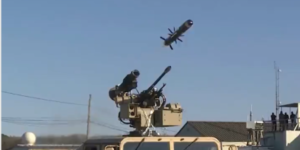
“…The wide employment of both commercial and military drones (in Ukraine) has seen land forces launch rapid acquisition counter drone programmes.
“EOS is one of the few if not the only supplier whose hard kill RWS can achieve counter-drone effects with traditional weapons systems. (conventional systems are not accurate enough.” (Ed: more of this later).
The R400 RWS includes some American technology, with exports constrained by US ITAR rules, said Jones.
“Whereas the R150 is an AS65 gimbal and it is an all-Australian design and doesn’t have any ITAR components.
“We are opening that pre-production line for that gimbal and that particular capability, we have secured one contract with L3Harris, and we are very confident we will secure another two other contracts in the not too distant future.”
L3Harris uses the R150 for its Vampire utility-mounted weapon station which it is selling to Ukraine under contracts recently authorised by US President Joe Biden.
EOS’s weapons technology is also central to the T2000 armoured vehicle turret and Redback Infantry Fighting Vehicle being proposed to the Australian Defence Force under Land 400 Phase 3 by Hanwha Defense Australia.
Meanwhile the heavy weapon R800 is undergoing trials in the United States, including anti-drone and ground engagement demonstrations. EOS operates a factory in Huntsville, Alabama.
EOS also offers its laser-based Titanis counter drone which degrades and destroys drones using a 34kw laser. A 60kw system will be available soon and a 100kw laser is in the works.
Jones said: “Andreas (Schwer, EOS Chief Executive Officer) and the board look to EOS being very much a laser development company.
“We have space systems and the laser technology for laser space debris tracking we provide currently at Mount Stromlo Observatory in Canberra.
“In many respects it is easy to see the defence business because we sell products as in weapons systems.
“The space business is much smaller but at the same time strategically, it is a different value case that they offer – they are still very much central.”
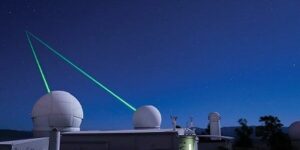
It is the accuracy of EOS’s laser systems developed for space debris tracking that is the core intellectual property behind the company’s success.
Jones said: “When you need to be able to point a laser at a target that is hundreds of thousands of kilometres away and maintain a track on that as the Earth spins, and everything that goes into being able to do that…we have brought that same technology into our weapons stations and turrets.”
All other companies competing in the weapons stations space use traditional ballistic calculations such as wind, temperature and barometric pressure to calculate the firing of a round at a target, something EOS also utilises.
EOS’s systems utilise a lot more calculations derived from space tracking, giving their RWS systems greater accuracy – invaluable for hitting a target hundreds of metres away from an armoured vehicle travelling at speed over bumpy terrain.
“So when a weapons station provider (EOS) comes along and says it can hit a vehicle target at 500 metres, that’s better than what a soldier can do.
“The fact is we can deliver a head shot at about 1,000 metres with a machine gun that is designed for wide-area engagements at 500 metres.
“We are qualifying and delivering systems, engaging on the move targets beyond 2,000 metres today, and we are only getting better at it.”
Peter Roberts has a financial interest in Electro Optic Systems Holdings Limited.
Pictures: EOS RWS remote weapon station at Avalon 2023 air show/RWS missile launch/Mt Stromlo Observatory
@AuManufacturing’s editorial series – Celebrating Australian sovereign capability – is brought to you with the support of Nova Systems and Titomic.
Topics Analysis and Commentary Defence
@aumanufacturing Sections
Analysis and Commentary Awards Defence Manufacturing News Podcast Technology Videos





